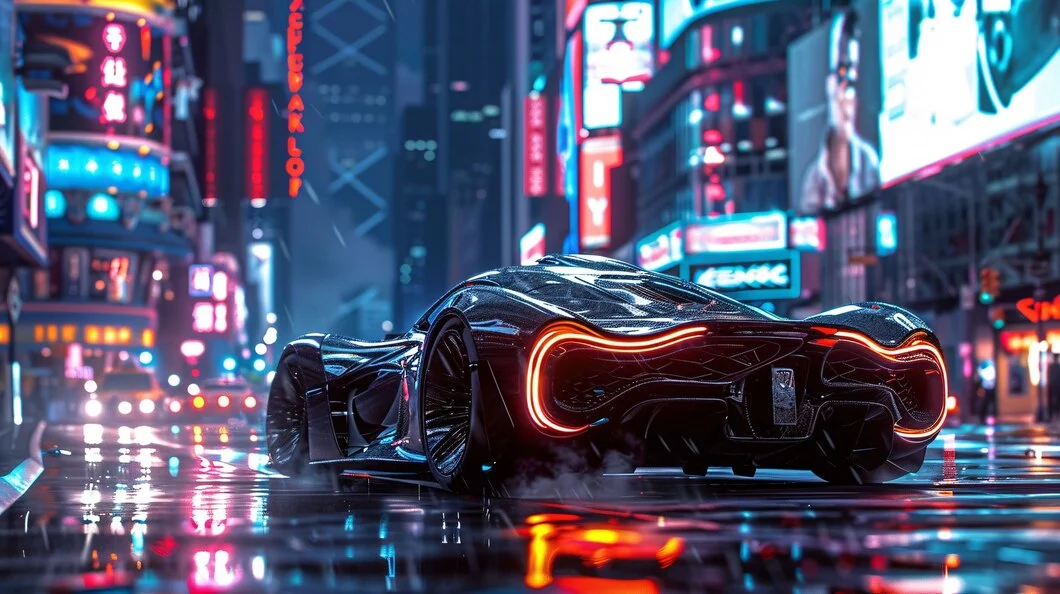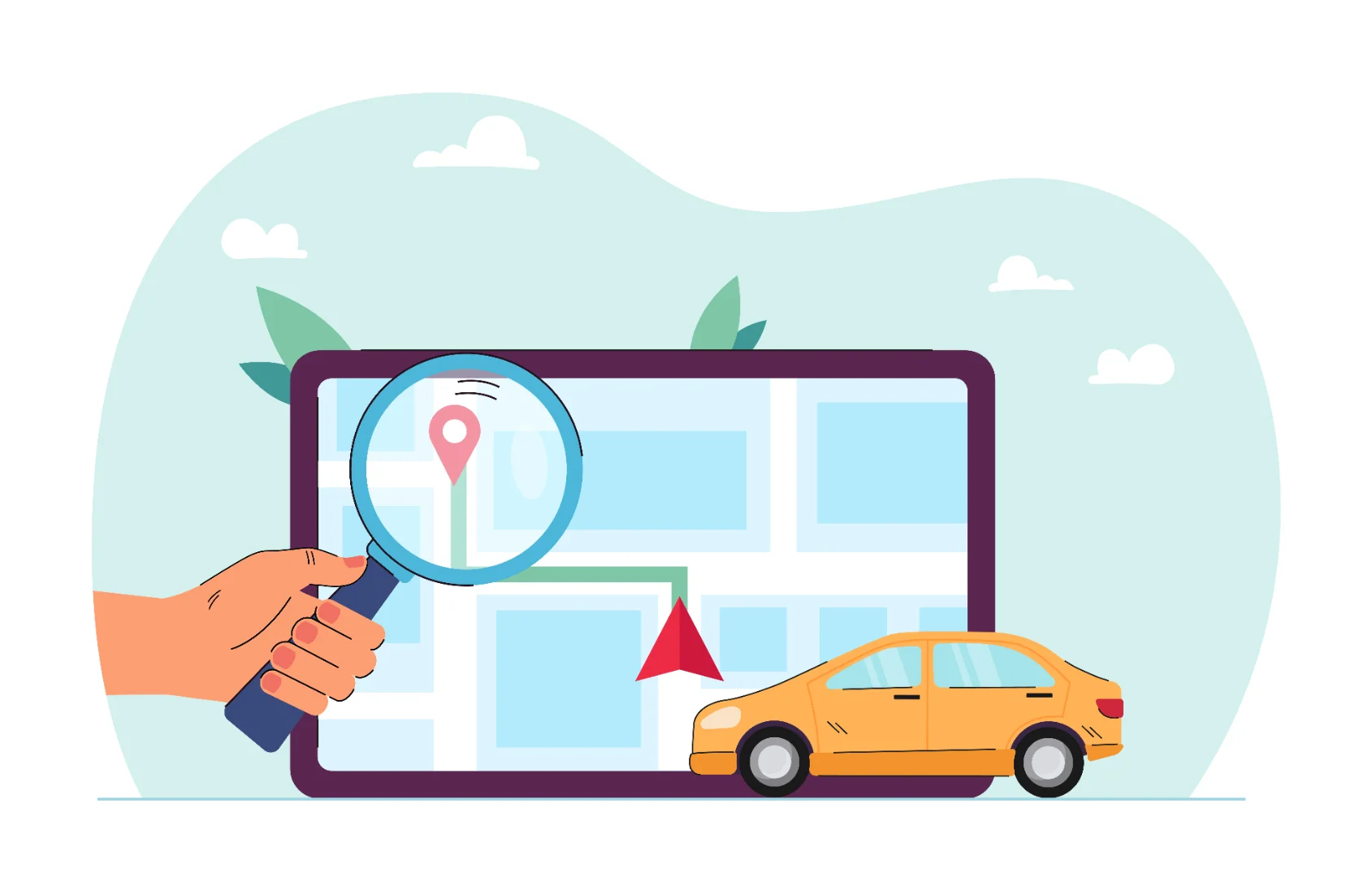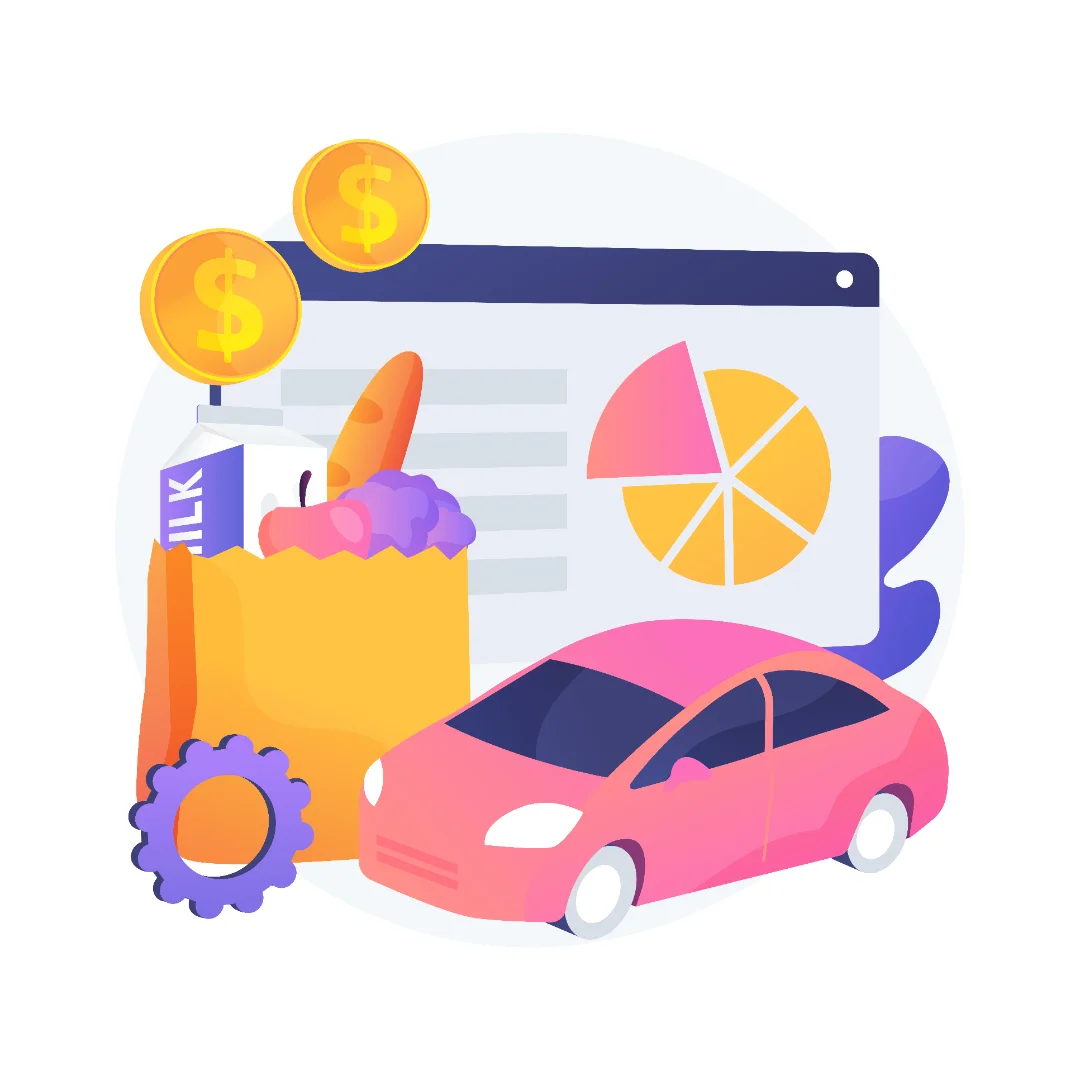.webp)
How AI-Enhanced Photos Are Reshaping Marketplace Listing Strategies
How AI-Enhanced Photos Are Reshaping Marketplace Listing Strategies
Introduction: The Emotional Power of Visual First Impressions
Imagine scrolling through an online car marketplace late at night. Your eyes skim through a dozen listings some dimly lit photos taken in a parking lot, others blurry phone shots with random backgrounds. Then suddenly, one image stops you. The car looks like it just rolled out of a studio: clean background, perfect lighting, subtle shadows, even the brand logo is presented in a classy, consistent way.
Without even realizing it, your brain lingers. You click. You read more. You imagine yourself in the driver’s seat. That one photo enhanced, polished, intentional has already done the heavy lifting.
This is the power of visuals in the digital era. We often say, “Don’t judge a book by its cover.” But when it comes to car listings, buyers almost always do. The cover is the photo, and the photo sets the tone for everything else.
Dealerships and OEMs know this. Private sellers are starting to realize it too. And this is where AI-enhanced photos come in not as a luxury, but as a new standard for how cars are marketed and sold online.
Why Visuals Speak Louder Than Words
Cars aren’t just machines; they’re symbols of lifestyle, identity, and aspiration. That’s why buyers react first with their eyes. A listing description can tell you “low mileage, one owner, great condition.” But if the photo looks sloppy, buyers hesitate.
Think about your own browsing habits. When was the last time you clicked on a grainy, tilted car photo? Probably never. We’re wired to equate visual quality with product quality. A polished image suggests the car has been cared for. A messy shot suggests the opposite.
Marketplaces themselves recognize this. Platforms like AutoTrader, eBay Motors, and Carvana give more visibility to clean, professional-looking listings. In fact, as Car Studio AI’s platform strategies blog points out, algorithms often prioritize high-quality visuals because they improve click-through rates and user satisfaction.
So the psychology is clear: great photos don’t just “look good.” They change buyer behavior.
The Digital Shift – From Parking Lot Snapshots to Marketplace Showrooms
Selling cars used to be about physical presence. Buyers visited a lot, kicked the tires, took a test drive. Today, the journey often starts and sometimes ends entirely online.
The bottom line: digital has become the default showroom, and in this showroom, the car photo is the salesperson.
AI as the Photographer’s Assistant
Here’s the good news: you don’t need to be a professional photographer with a $5,000 camera setup. AI has stepped in to handle much of the heavy lifting.
What AI does best:
Think of AI like an invisible assistant. Instead of spending hours in Photoshop, you upload a batch of photos, and within minutes you have studio-grade visuals ready to go live.
And here’s where it gets powerful: speed + consistency. AI doesn’t get tired. It doesn’t forget the brand guidelines. Whether you have 5 cars or 500, every listing can look professional.
This alone reshapes marketplace strategies: cars get listed faster, with images that inspire trust from the very first glance.
Consistency – Building a Visual Identity That Sells
One of the biggest struggles dealerships face isn’t just taking photos it’s making sure every photo feels on brand. Imagine scrolling through a dealer’s inventory and seeing one car shot in a dim garage, another in bright sunlight, another half-cropped in front of someone’s house. Even if the cars are in great shape, the presentation feels scattered.
That inconsistency plants doubt: “If they can’t manage their listings, how well do they manage their cars?”
AI solves this by enforcing visual harmony. Every image processed follows the same set of rules: background style, shadow tone, logo placement. It’s like having a brand manual that automatically applies itself to every photo.

This isn’t just cosmetic. Consistency builds trust. When buyers see a dealership’s listings, they subconsciously register professionalism. That trust translates into confidence and confidence is what moves a buyer from browsing to inquiry.
It echoes the findings in Car Studio AI’s platform strategies piece: brand consistency across images doesn’t just make a page look nice; it affects how algorithms rank listings and how buyers perceive reliability.
Speed and Scalability – Why Time-to-Market Matters
In today’s fast-paced automotive market, time kills deals. The faster a car is listed online, the faster it can sell. Delay the photos, and you risk holding costs, depreciation, and losing attention to competitors.
Traditionally, processing photos was a bottleneck. A dealership might wait days for a photographer to edit batches of cars. Private sellers might abandon editing altogether, uploading raw, unflattering photos.
AI changes this dynamic completely:
For dealerships juggling hundreds of vehicles, this scalability is a game-changer. For private sellers, it’s the difference between being “just another listing” and standing out on page one.
Think of it like this: in a race to capture buyer attention, AI is the turbo boost that gets your car in front of eyeballs before the competition has even warmed up the engine.
Visual Marketing Strategies That Convert
Photos don’t just display cars they tell stories. And AI makes it easier to craft those stories in ways that resonate with buyers.
Three strategies that AI-enhanced photos empower:
This aligns closely with Car Studio AI’s guide on selling privately vs. using platforms. Private sellers often lack marketing polish, while platforms enforce stricter photo standards. With AI, private sellers can now compete on equal footing, creating platform-level visuals from their living room.
And for dealerships, it’s not just about one sale it’s about marketing at scale. Each polished photo strengthens the brand identity, turning every car listing into a micro billboard.
Buyer Psychology – Why We Click What We Click

At the heart of all this is human psychology. Buyers don’t think, “This image has perfect lighting and balance.” They just feel it.
Good visuals trigger emotions:
I’ve seen this firsthand. A friend once listed his car online with regular phone shots. After a week, barely any interest. He re-uploaded with AI-enhanced photos clean background, brighter lighting, logo added. Within 24 hours, he had four serious inquiries. Same car, same price, different presentation.
This is the invisible leverage AI gives sellers. It’s not about changing the car. It’s about changing how the buyer feels when they see it.
As Car Studio AI’s resources emphasize, photos are more than decoration they’re a psychological gateway. They decide whether a buyer clicks, scrolls, or walks away.
Case Example – Carvana and the Power of Presentation
One of the clearest real-world illustrations of how visuals reshape sales comes from Carvana, the online-only car marketplace. Carvana disrupted the industry not by reinventing cars, but by reinventing how they’re shown.
In their step-by-step process (as described in Car Studio AI’s Carvana blog guide), everything hinges on presentation:
This isn’t an accident. Carvana knows that perception creates confidence. By standardizing photos, they remove friction. Buyers don’t wonder, “Is this legit?” They just start thinking, “Is this the right car for me?”
What Carvana teaches us is simple: in digital-first marketplaces, presentation is product. The listing is the showroom. The photo is the handshake.
Future Horizons – What’s Next for AI in Automotive Listings?
AI photo enhancement is just the beginning. Over the next few years, we’ll see innovations that push the marketplace experience even further:
The trajectory is clear: the line between physical and digital showrooms is blurring fast. And sellers who adopt early will be the ones setting buyer expectations tomorrow.
Conclusion – AI Photos as a Necessity, Not a Luxury
Not long ago, AI-enhanced visuals felt like an “extra.” A nice-to-have tool for sellers who wanted to stand out. But the market has shifted. Today, they’re becoming the baseline expectation.
For dealerships, AI means:
For private sellers, AI means:
The takeaway is simple: if your photos don’t inspire confidence, someone else’s will.
Platforms like Car Studio AI make it easy to get started. You don’t need a studio, a photographer, or endless hours of editing. You just need to embrace the tools that buyers already respond to clean, consistent, trustworthy visuals.
The future of automotive sales isn’t just about cars. It’s about how cars look online. And AI is leading the way.
Expanded FAQs – Practical Insights for Sellers

Q: How does AI photo enhancement actually work?
A: Think of AI as a silent, highly skilled photo editor that never sleeps. At its core, AI uses machine learning models trained on millions of images everything from showroom-quality photos to poorly lit driveway shots. By studying patterns, the system “learns” what makes a photo appealing: balanced lighting, sharp focus, consistent contrast, and clutter-free backgrounds.
When you upload a car photo, the AI instantly analyzes it for common issues maybe the shadows are too harsh, the car is slightly tilted, or the background distracts from the vehicle. It then makes a series of micro-adjustments: correcting brightness, smoothing reflections, aligning the car perfectly, even adding realistic shadows if they’re missing. For dealerships, the AI can also automatically insert brand logos or apply uniform backdrops so every photo matches the company’s identity.
To the seller, it feels effortless just a quick upload and download. But behind the scenes, it’s a sophisticated process that mimics the judgment of a professional photo editor, except at lightning speed and with absolute consistency across hundreds of photos.
Q: Can AI photos really increase sales?
A: The short answer is yes, but the long answer is more interesting. Online marketplaces run on two key dynamics: visibility and trust. High-quality photos improve both.
First, visibility. Marketplaces like eBay Motors, AutoTrader, or even Facebook Marketplace reward listings that get engagement. Clear, attractive photos lead to higher click-through rates, which signals to the platform’s algorithm that your listing is valuable. The more clicks you get, the higher your listing appears in search results.
Second, trust. Buyers often make a split-second decision about whether they believe the seller is credible. A dealership in Texas put this to the test by switching their entire inventory to AI-enhanced photos. The result? Their average listing time dropped by 27%. Why? Because buyers felt confident enough to reach out sooner. For private sellers, it can be the difference between waiting weeks with little interest and getting inquiries the same day you post.
So while AI doesn’t magically change the car, it changes how people perceive it. And in sales, perception is everything.
Q: Isn’t this expensive?
A: Surprisingly, no and that’s what makes AI such a game-changer. Traditional methods of creating polished car photos often require a professional photographer, studio lighting, and post-production editing. That can run into hundreds of dollars per session, especially if you’re shooting multiple vehicles. For dealerships with high turnover, costs quickly spiral.
AI platforms, on the other hand, scale effortlessly. Whether you need to process 5 images or 5,000, the pricing remains predictable and significantly lower than manual editing. Think of it as replacing a full-time photography team with a single subscription-based service that works around the clock.
When you factor in the indirect savings faster sales, reduced inventory carrying costs, fewer days sitting on the lot the economics become even clearer. Instead of being an added expense, AI photo enhancement often pays for itself in the very first sale.
Q: Do I need special training?
A: Not at all. AI tools are designed to be intuitive and user-friendly because the companies building them know their audience: busy dealers, independent sellers, and marketing teams with limited time.
The process is usually as simple as drag-and-drop. You upload your raw photos, select your preferences (for example, a clean white background or a branded backdrop), and within minutes the system delivers ready-to-use images. Most platforms include step-by-step guides, but in reality, most people figure it out on their first try.
Dealerships that roll out AI tools often report that their staff need less than half an hour of training to get comfortable. After that, the process becomes second nature. Even private sellers who have never edited a photo in their lives can produce studio-quality results without touching Photoshop.
Q: What if I want to sell privately, not through a platform?
A: This is where AI truly levels the playing field. Large platforms like Carvana or AutoTrader enforce strict standards images must be clear, well-lit, and consistent. That’s part of why buyers trust them. Private marketplaces, however, are often chaotic. Scroll through Facebook Marketplace or Craigslist and you’ll see everything from grainy night shots to cars half-hidden in garages.
By using AI, private sellers can instantly elevate their listings to look as polished as those on professional platforms. Clean backgrounds, sharp details, and consistent presentation send a subtle but powerful message: “This seller is serious and trustworthy.” In a sea of amateur photos, your listing will stand out as professional, which directly translates to more views and faster responses.
Think of it this way: buyers aren’t just choosing between cars, they’re choosing between sellers. AI helps make sure you look like the safe, professional choice.
Q: Will buyers notice the difference?
A: They might not consciously say, “This must be AI-enhanced.” In fact, the best enhancements are invisible the car looks natural, not artificially edited. But buyers will feel the difference. They’ll pause longer on your listing. They’ll zoom in on details. They’ll imagine the car parked in their driveway.
Good visuals lower psychological barriers. When a buyer feels that a seller is professional, they’re more likely to reach out, negotiate seriously, and trust the transaction. A polished image sets the stage for the story: “This is a car worth your time.”
One private seller shared that after switching to AI-enhanced photos, he received nearly double the inquiries compared to his first attempt with raw phone shots. The car hadn’t changed only the perception had. That’s the subtle but powerful impact of presentation.
Final Thought
The car itself hasn’t changed. What’s changed is how buyers see it.
AI-enhanced photos aren’t about deception. They’re about putting the car in its best light literally and figuratively. In a crowded digital marketplace, that first impression is everything. And with AI, you don’t just catch the eye you capture the imagination.
So the next time you snap a photo of a car for sale, ask yourself: Would I click this? Would I trust this?
If the answer is no, it’s time to let AI step in.
